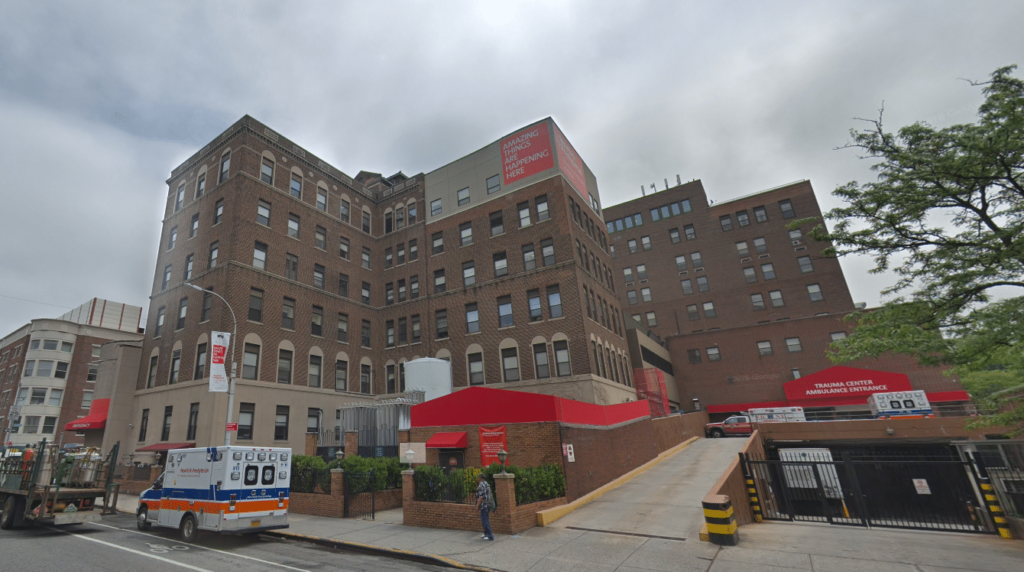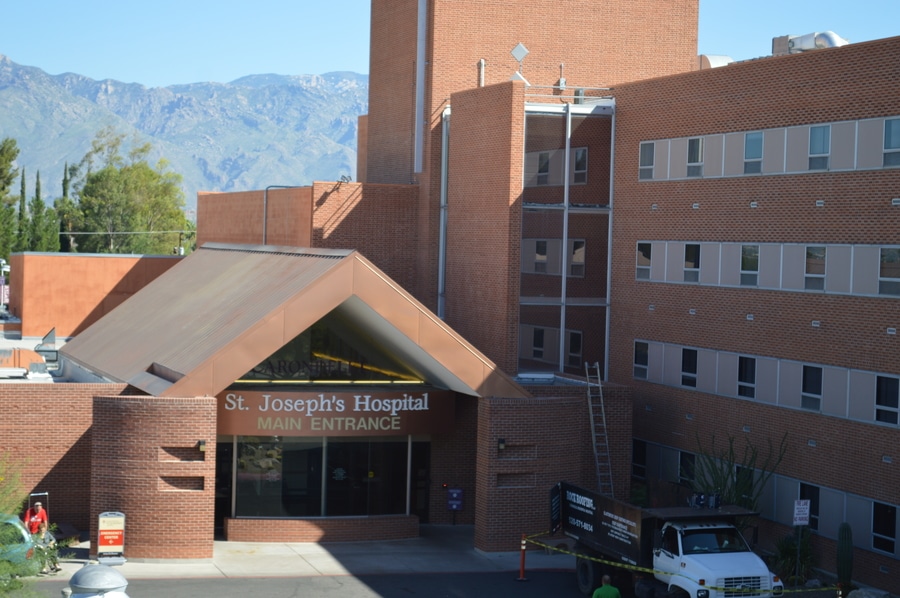NYC Nurses Vote To Ratify Contract For Increased Pay, Safe Staffing Ratios

A majority of union nurses that work at NewYork-Presbyterian hospitals voted Thursday to ratify a four-year contract with the hospital that includes the establishment of minimum staffing ratios among other provisions, according to a Facebook post from the New York State Nurses Association (NYSNA). About 91 percent of the nurses at the hospital voted to ratify the contract agreement, according to the post. NYSNA members and representatives from some of the state’s largest hospitals reached the tentative contract agreement last Tuesday, ending a months-long feud and preventing a major nurse strike. The four-year contract includes a $100 million agreement to hire nearly 1,000 additional staff members at New York-Presbyterian Hospital, Montefiore, and Mount Sinai hospitals, a minimum wage increase of three percent annually and an extended window for nurse retiree health benefits. The provision of the contract praised the most by supporters on social media—and that was often the source of escalating tension between union members and the hospitals—was the agreement to create unit-specific staffing grids that would establish minimum nurse-to-patient ratios. This is the first time minimum staffing levels have been “spelled out in the contract with a meaningful enforcement mechanism,” according to a press release from NYSNA. Once both parties agree on the minimum staffing levels, a third-party arbitrator will be responsible for enforcing those levels and changing them based on patient census and acuity changes, according to the contract. Anthony Ciampa, first vice president of the New York State Nurses Association told the New York Times this agreement marks a groundbreaking achievement in addressing staffing issues statewide. “This is going to have a very positive impact, and it will be the trendsetter of the industry,” Ciampa told New York Times. “What we decide in these major city hospitals tends to set the framework for other hospitals.” Details of the full agreement can be view below:
Nurses at 2 Arizona hospitals vote to join national union

Nurses from St. Joseph’s Hospital and St. Mary’s Hospital in Tuscon, Arizona voted Friday to unionize, joining the National Nurses Organizing Committee and National Nurses United, according to a press release. About 550 nurses at St. Joseph’s and 450 at St. Mary’s are now represented by Tenet Health division of the national union, swelling the group’s membership total to more than 6,000 registered nurses and 14 Tenet facilities across four states. Both hospitals are part of the Carondelet Health Network in Tucson, which is owned by Tenet Health Corporation based out of Dallas, Texas. In a 293-110 vote, 73 percent of the nurses at St. Joseph’s voted in favor of unionizing and 221-85, or 72 percent, voted in favor at St. Mary’s. Both votes were conducted by the National Labor Relations Board, according to the press release. “I am so excited that we will now be able to advocate much more effectively for our patients,” Lowella Choate, a neuro ICU nurse at St. Joseph’s Hospital said in a press release. “I look forward to all that we can achieve by standing together with the 6000- RN-strong NNU Tenet Division at 14 Hospitals throughout the country.” As Arizona is a right-to-work state, nurses at the hospitals are not required to join the union as a condition of employment and they don’t have to pay union dues even if actions by the union benefit them. Carondelet Health Network officials told the Arizona Daily Star they would respect the nurses’ decisions and will work with them to reach a “mutually beneficial collective bargaining agreement.” Nurses at the hospitals will elect a team of colleagues to represent them in talks with hospital officials on a first collective bargaining contract, according to the NNU press release.
Mass. Nurses Argue Pros, Cons of Mandated Ratios In Ads For Ballot Initiative

Already know all about Question 1 in Massachusetts? Click here to read about how this could impact travel nursing in the state. Massachusetts nurses are arguing on both sides of the fence in the first wave of TV advertisements about a ballot initiative that would regulate nurse staffing ratios in the state, according to a Boston Globe report. The Massachusetts Nurses Association, which sponsored the initiative, supports the Committee to Ensure Safe Patient Care along with many other local labor unions both in and out of the state. The committee argues that safe staffing ratios in non-ICU units will cut down on patient complications, readmissions, errors and potentially life-threatening risks. The Coalition To Protect Patient Safety, an anti-initiative group backed by state hospital groups and local chambers of commerce, argue that adopting a rigid proposal will “take decision-making power out of the hands of healthcare professionals” and negatively impact hospital costs and quality of care. While both groups stances on Question 1 are clearly opposed, their similar advertising and marketing strategies could cause confusion for uninformed voters, according to the Globe report. Both groups have similar names, use nurse testimonials in their website advertisements, feature similarly designed lawn signs and even have nearly identical Twitter handles. (Pro-initiative @PatientSafetyMA and anti-initiative @MAPatientSafety) Both groups are ramping up advertising efforts ahead of the Nov. 6 midterm elections. If approved by voters, the initiative would establish patient limits determined by the type of medical unit or patient with whom a nurse is working, and the limit would be applied at all times, according to the Massachusetts Secretary of State website. Civil penalties for hospitals that don’t comply with the mandated ratios could go up to $25,000 per violation, along with $250-2,500 in fines per day for facilities that don’t have information about the limits in all patient rooms, units and patient areas. How “Yes” On Question 1 Could Affect Travelers In short, mandated nurse-to-patient ratios across the state could sharply increase nurse recruiting and retention efforts by hospitals, which in turn could increase the amount of travel nurse needs. While multiple states have laws relating to nurse staffing ratios, only California has both passed and implemented mandatory statewide ratios. The state passed the law in 1999, implemented it completely by 2004, and since then has been the source of numerous studies about the impact of mandated ratios. Most studies found positive benefits for patient outcomes, significantly lower mortality rates and reduced nurse burnout, but several also point to greatly increased staffing efforts leading up to and after implementation. A 2008 study submitted to the Journal of Hospital Medicine found that nurse staffing in California remained unchanged from 1993 to 1999, but facilities significantly increased staffing efforts between 1999 and 2004. As of 2017, the state had the highest number of registered nurses in the U.S. at 282,290, according to Bureau of Labor Statistics data. It also holds the top spot for the number of active nursing licenses with more than 432,000 as of Sept. 8, according to National Council of State Boards of Nursing data. There are other factors to consider when determining why California brings in so many nurses—geographic diversity, lots of rural communities, high paying contracts—but many staff and travel nurses cite mandated ratios as a positive benefit of working in the state, which could help with hospital recruiting.
Kaiser proposes change to national labor partnership amid nursing union fractures, continued protests

Negotiations between healthcare company Kaiser Permanente and members of the Coalition of Kaiser Permanente Unions (CKPU) remain tense as nurses across the state continue the third and final week of planned protests at Kaiser-owned California facilities. Members of both parties met on May 7 to discuss details of the Coalition’s Labor Management Partnership, which was established between Kaiser and CKPU in 1997. Kaiser presented their new potential blueprints for this partnership, which would focus on individual bargaining with local union contracts expiring in 2018 or those who are entitled to wage reopeners, according to a company press release. The company plans to maintain provisions of existing agreements while bargaining new contracts, according to the release. “We asked union leadership to review our proposed improvements to the partnership agreement and provide feedback,” the company said in the press release. “The next step is to work in partnership with labor to have a final version of a new partnership agreement in the coming weeks.” CKPU fired back against the new bargaining format, saying the proposal represents a “top-down, unilateral” move that limits the coalition’s ability to negotiate under unified terms. “The unions of the Coalition are completely committed to Partnership and the great work we’ve done together, but any changes to the Partnership need to be discussed in national bargaining,” said Walter Allen, executive director of Office and Professional Employees International Union Local 30 in a press release. Healthcare workers at Kaiser Antelope Valley say, “Get your priorities straight, Kaiser! You made a 22% increase in profits from 2016-2017 — but you’re still trying to outsource jobs and lower wage scales.” #HealthcareJustice @BernardJTyson @RamonfBaez @DrRichardIsaacs pic.twitter.com/nAtauqza5D — SEIU-UHW (@seiu_uhw) May 10, 2018 In the meantime, California Kaiser workers will continue to picket healthcare facilities regarding claims of job outsourcing and layoffs until the end of the week. “I am confident our members will take unified action to say enough is enough,” said Ron Ruggiero, president of SEIU Local 105 in a release. “We deserve a great new contract and any partnership worth its name must be on equal terms. Our union, and our Coalition, are clear that this is what we are fighting for.” Union disputes delay contract negotiations The longstanding terms of the partnership, as well as the original dates for the National Bargaining, were thrown into disarray in March after more than half of the local nursing unions split from the CKPU one day before negotiations were scheduled to occur. Twenty one local unions with about 45,000 members split from CKPU, forming a new union called the Alliance of Health Care Unions (AHCU), according to a report from nwLaborPress. The remaining 13 unions in the CKPU still retain more than 80,000 members, most of which are based out of California. During a union meeting in 2017, SEIU United Healthcare Workers West (SEIU-UHW), the largest union in CKPU, pushed for more influence over CKPU decisions making. Additionally, SEIU-UHW made aggressive moves against Kaiser without overall CKPU approval, negotiating in private meetings and threatening to push contract issues to voters with a ballot initiative. Members of the newly formed AHCU said they had good partnerships with Kaiser and wanted to continue those relationships while still maintaining a unified voice–outside of the influence of unions still a part of the CKPU. The new union’s executive director Peter diCicco, founder and executive director of the original CKPU from 1997 to 2006, said joining AHCU feels like coming home. “But we’ve got our work cut out for us,” diCicco said in a press release. “We’re working to establish a new structure that builds on what worked best with the prior coalition, while addressing internal coalition issues that became obvious in recent years and ultimately drove the creation of this new Alliance.” The AHCU has not announced their plans for negotiating with Kaiser, but the potential is there for a compromise that satisfies both parties. The California Nurses Association, a union with National Nurses United that’s separate from the CKPU, successfully negotiated a tentative contract with Kaiser in April with provisions targeting staffing enhancements, wage increases and employee benefits.
